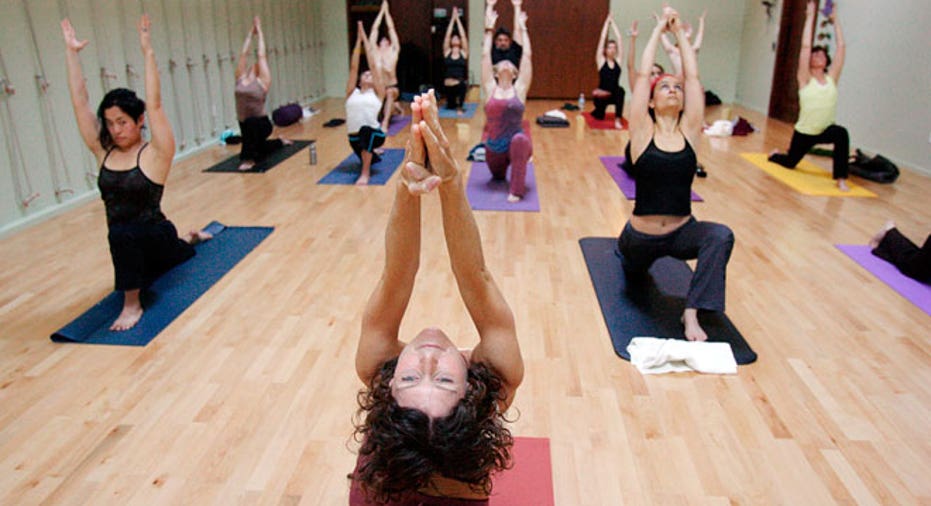Set Aside a Place for Meditation at Home

In response to the quickening pace of society, some people set aside space in their homes for meditation, prayer and serenity.
"As times have become harder, people have gravitated to what has been true for them in their heart," says Annie Pane, author of the book "The Dance of Balance: Feng Shui for Body, Mind and Spirit." "I think it is healthy. It gives people something to stand on."
Pane, who lives in Virginia, says the idea began to catch on in the mid-2000s and gained popularity as the recession deepened. Spending time in a quiet sanctuary within your home helps you gain perspective on your problems, she says.
Regardless of their religious beliefs, people can benefit from having a place for quiet and contemplation, says Terah Kathryn Collins, founder of the Western School of Feng Shui in Encinitas, Calif. The idea is to have someplace to go where you don't have to worry about responding to emails and cellphone messages.
Some people spend thousands of dollars to do this by adding rooms to their homes or remodeling existing spaces, she says. For others, finding a sacred space can be as simple as kneeling on a prayer rug or retreating to a quiet corner.
Disconnecting from the everyday world
Architect Sarah Susanka, author of the "Not So Big House" series of books on lifestyle and home design, has created what she calls "a place of my own" in her home in Raleigh, N.C.
"It is a place to allow yourself to disconnect from the everyday world and really be with yourself," she says. "If you let the things that are making you busy run your life, you never will have time to be still." Sarah's inner office before and after first remodeling.
Susanka has set aside a room that does double duty as her meditation space and the place where she does her writing.
"It is a bonus room," she says. "It is above the garage. When we moved in, it was the least desirable place in the house."
What she liked about the room, which measures 15-by-16 feet, was that it had a steeply sloping ceiling, which gave it a cozy and intimate feeling. She decorated it in earth tones and made improvements.
Remodeling your way to tranquility
"I painted this room the terracotta color," she recalls. "I added bookshelves on both walls. The whole wall is floor-to-ceiling in bookshelves surrounding a window, which makes it really beautiful. People realize it is a sacred space."
To bring in more light, Susanka added a skylight and a dormer window, which extends outward from the room's sloping roof.
The remodeling project, which began in 2001 and was finished in 2004, was done in two phases. The skylight, paint and a desk cost her about $5,000. Adding the dormer window and bookshelves cost about $10,000 more. She detailed the project in her book, "Not So Big Remodeling," (The Taunton Press, 2009) co-authored with Marc Vassallo. Raleigh house meditation writing space and attic meditation space.
Susanka says not to worry if you don't have a large budget to create a sacred space. The most important thing is to commit yourself to setting aside time each day for peace and tranquility. All you really need is a place where you can be at peace. Something as simple as a folding screen can be used to create a private space in your living room.
"You need very little space," Susanka says. "The place itself is actually inside you."
Making a personal choice
Not everyone has use for a special place for prayer or meditation. According to Saif Sabar, an imam at the Muslim Community Center of Greater San Diego, most people of the Muslim faith do not use home prayer or meditation rooms.
When it is time to pray, they simply pray wherever they are, he explains. "There is not going to be any kind of shrine. The Prophet (Muhammad) says the whole world has been made like a mosque. You can pray anywhere you like, as long as it is clean."
Although she was raised in a Jewish household, Gita Gendloff of Leucadia, Calif., studied meditation in India and has been heavily influenced by Hinduism. The real estate broker used to meditate in a loft at her home, accessible only by a ladder. After two hip placements, she has moved her meditations to a more accessible bedroom. She says she uses meditation to achieve a sense of serenity.
"When I go into that room, I focus and my concentration gets better," she says. "I can feel more in tune with nature, with the universe."



















